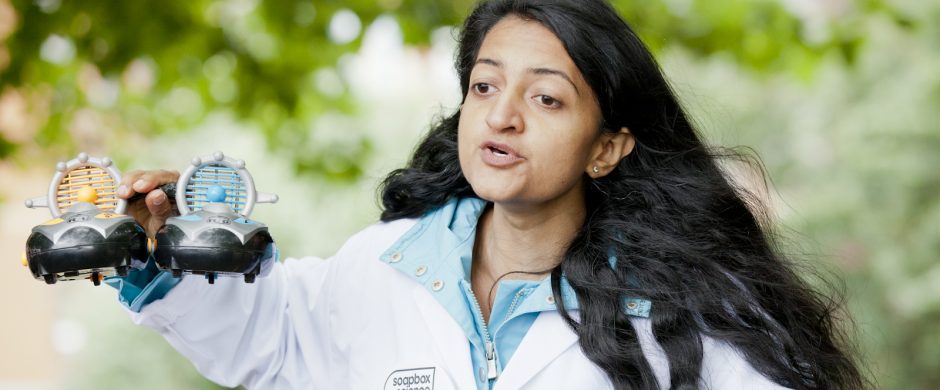 I’m Laura Cutugno, young PhD researcher in the field of Microbiology at NUI Galway, Ireland, taking part in Soapbox Science Galway on 7th July. I’m from Italy, in particular from Sicily, a beautiful and warm island in the south of Italy. I graduated in Biotechnologies and am passionate about science and microscopic life! I’ll be one of the speakers during the Soapbox Science event in Galway and, in the meantime, I would like to tell you the story of how I became a researcher.
I’m Laura Cutugno, young PhD researcher in the field of Microbiology at NUI Galway, Ireland, taking part in Soapbox Science Galway on 7th July. I’m from Italy, in particular from Sicily, a beautiful and warm island in the south of Italy. I graduated in Biotechnologies and am passionate about science and microscopic life! I’ll be one of the speakers during the Soapbox Science event in Galway and, in the meantime, I would like to tell you the story of how I became a researcher.
When I was a kid, I was sitting in my living room with my dad and someone on the TV was announcing the lunar eclipse. I asked my dad what it was, and he thought about it for few seconds and then ran to the kitchen. “I need to show it to you,” he said. He took a flashlight, an orange and a small lime. “The flashlight is the sun, the orange is the Earth and the lime is the moon,” he said, and he showed me what happens when the flashlight, the orange and the lime are aligned and the “orange” projects its shadow on the “lime”. That was the moment that I understood how interesting science is.

Figure 1. Lunar eclipse phases
Despite this romantic beginning, now I’m not an astrophysicist, but a microbiologist. How this happened is a really long story, made of books about the life of great women and scientists, like Marie Curie, Rita Levi Montalcini and Margherita Hack. My story is of a modest university in Palermo, Sicily, with good professors and a great woman that showed me the beauty of the microscopic world and increased my passion and curiosity for those small and invisible organisms called bacteria. She was a great lecturer who dedicated her whole life to science and to the University. She told me once “Laura, people think that a woman with an important position in academia is a weird exception, I would like this to be the rule.” She was a woman, a mother, a scientist and a lecturer. Her enthusiasm and her dedication to her students was always surprising for me and a great inspiration for my career. She is a fundamental part of this story, together with long hours of study and long hours of packing that brought me to Ireland from the south of Italy, to realise my dream of being a scientist.

Figure 2. From the top (clockwise): Rita Levi Montalcini, Marie Sklodowska-Curie and Margherita Hack.
And now it’s in Galway that I’m doing my PhD. Here I study the ability of bacteria to sense and respond to changes in the environment and how they can escape from potentially lethal conditions. The most interesting thing is that these small organisms possess something similar to a brain… yes, a brain in a microbe! This brain is called STRESSOSOME and it’s a small but great machine made up of small components, proteins. It has several “sensors-proteins” that can sense the changes in the environment; when something potentially dangerous for the bacterium is happening, the sensors transmit the information to other components and these release in the cell those that we can call the “messengers-proteins”. These messengers pass the information to a small protein, the effector-protein. This small protein is able to reprogram the bacterial cell from the “safe and happy” status to the “alarm and defence” status. This machine is so complex that one person is not enough to study it, that’s why I’m part of a Marie Sklodowska-Curie European Network, named PATHSENSE, made up by 13 young researchers that try to understand the structure, the operation and the effects of this microscopic brain.

Figure 3. ITN PATHSENSE logo. This project has received funding from the European Union’s Horizon 2020 research and innovation programme under the Marie Skłodowska-Curie grant agreement No 721456
That’s what I study and what brought me to Galway, and that’s what I will talk about during the Soapbox Science event in Galway. Because I love this project and I love bacteria and, like every person in love, I can’t stop talking about it and I would like everyone to know something more about the “brain of microbes”!
